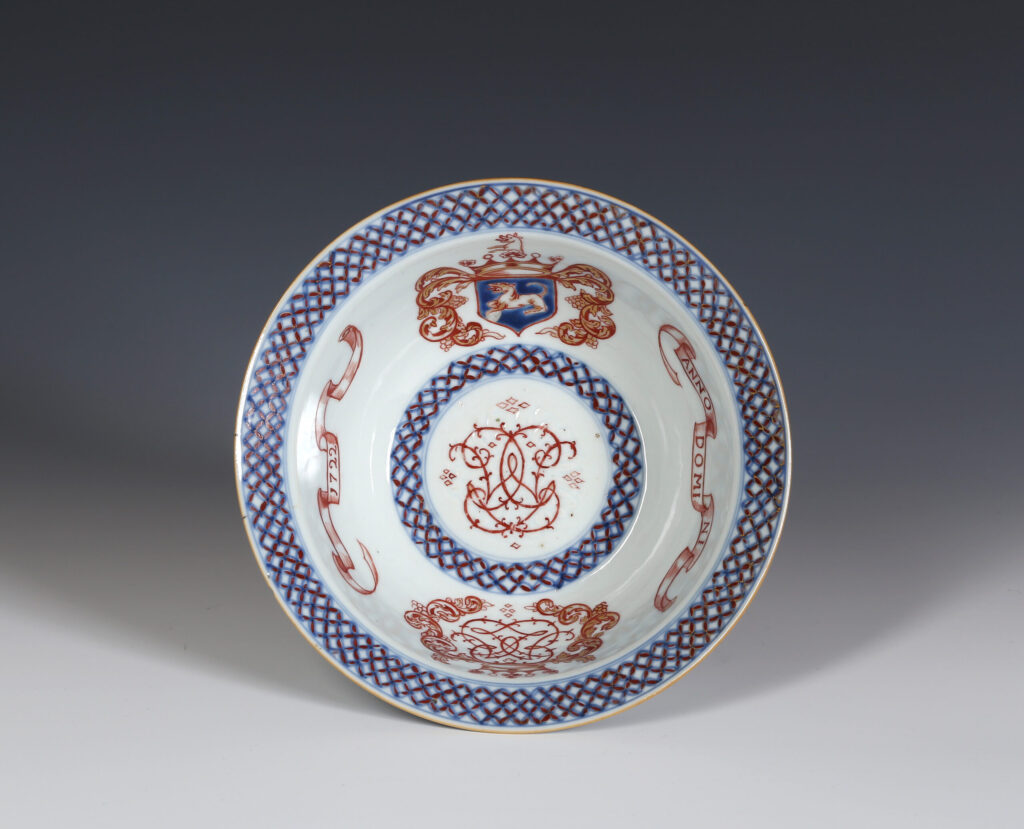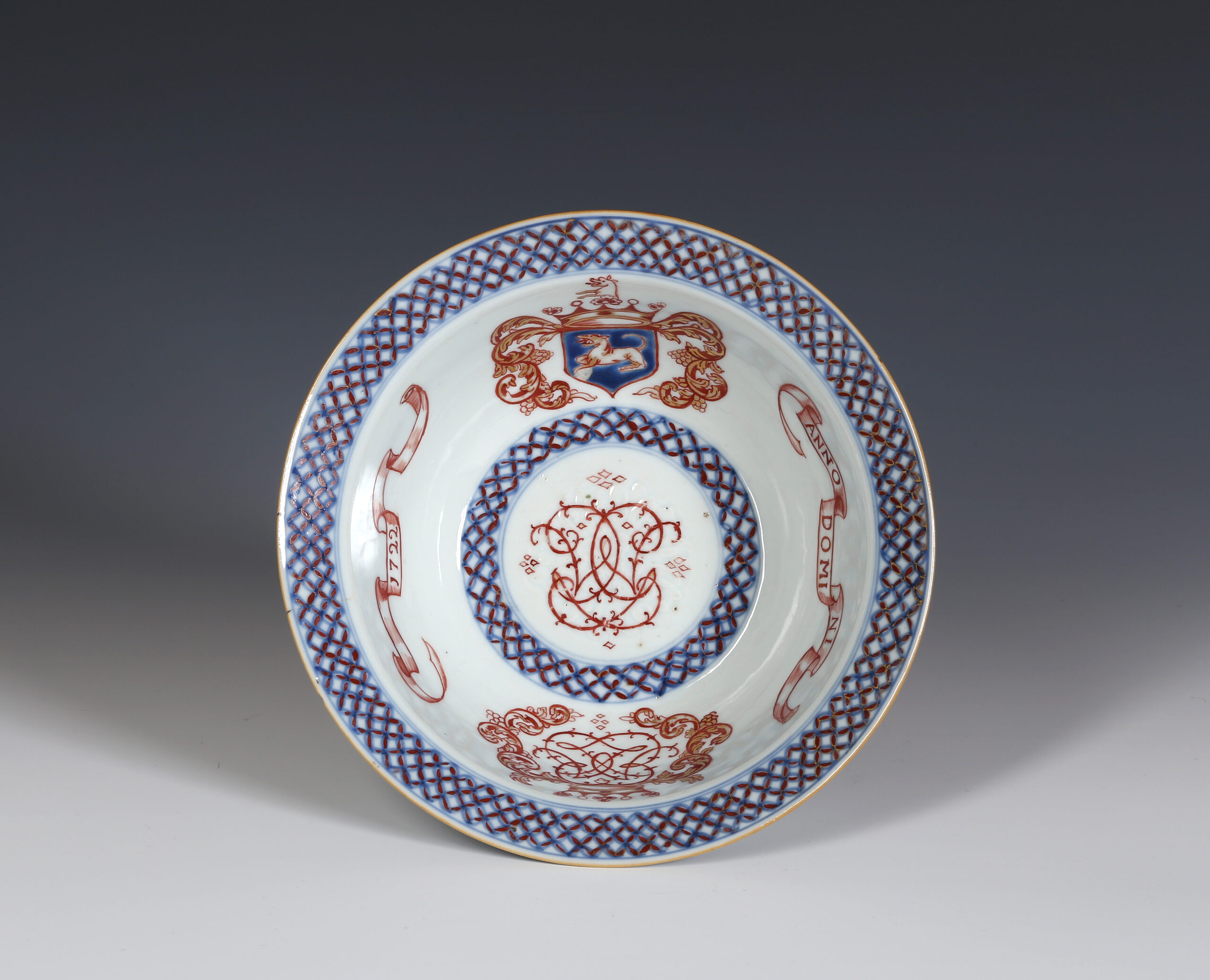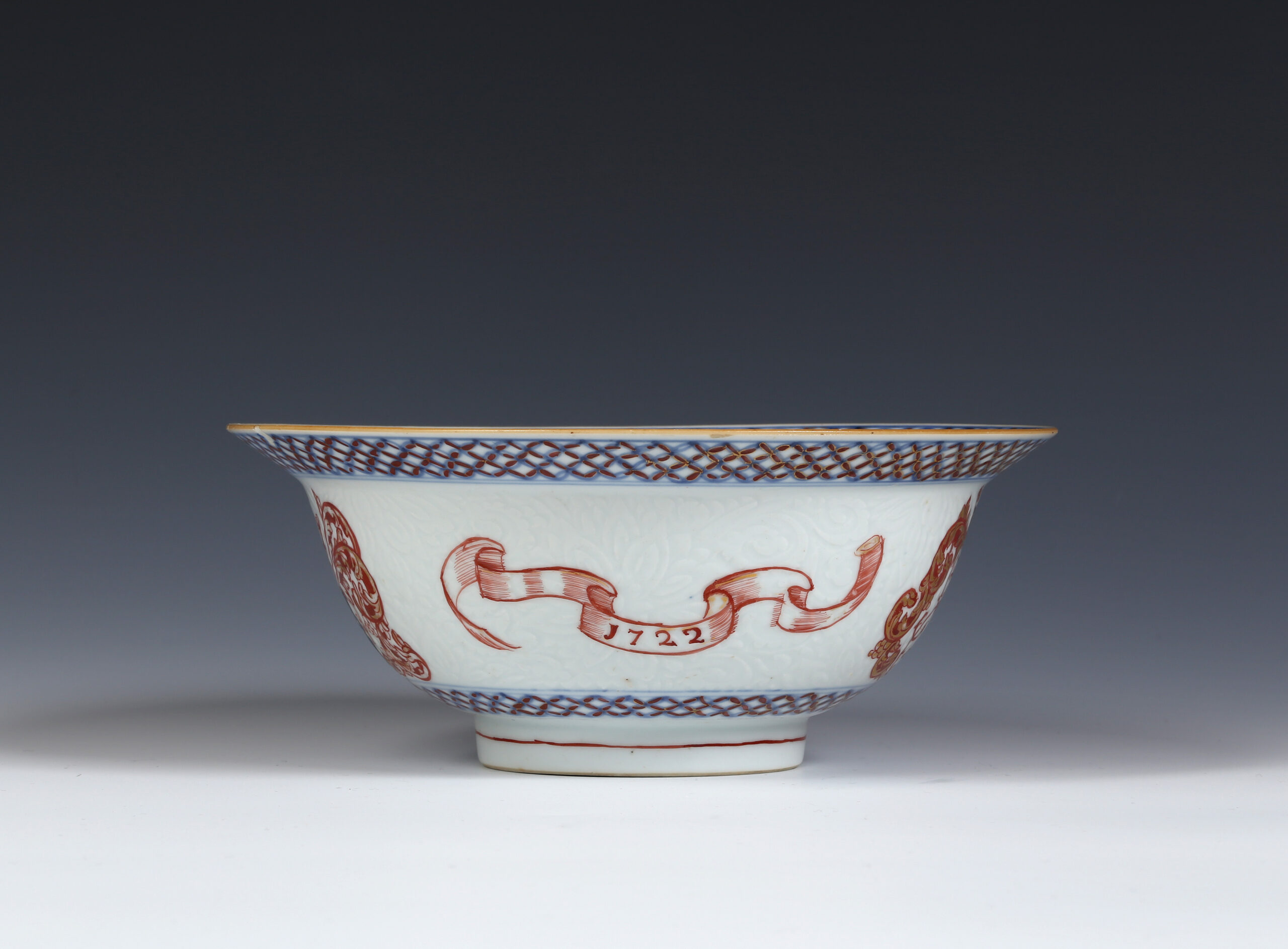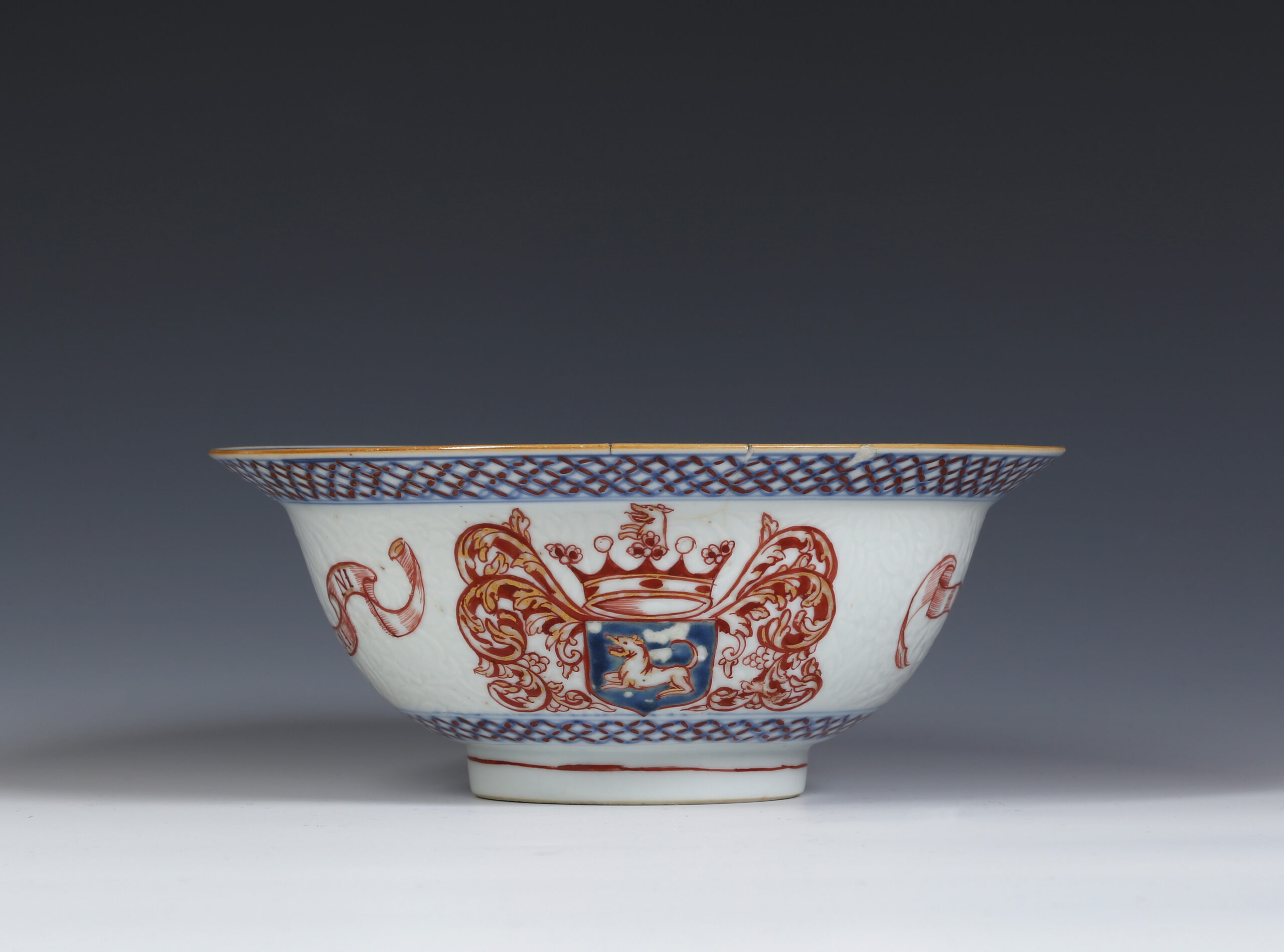
The blue and white bowl has been decorated in London in iron-red, gold and a blue enamel. It is inscribed four times ‘ANNO DOMINI 1722’ on iron-red ribbons, and twice with a coat of arms along with two elaborate ciphers. This bowl seems to be the earliest dated example of London-decorated porcelain.
The blue enamel with a tendency to flake and the bold feathered mantling around the arms are characteristic of a small group of London-decorated wares with British coats of arms dateable to between 1720 to 1735.[i] These link to a wider group of wares that added a further range of enamels over time.
We cannot identify the workshop that decorated this bowl or the related wares, but in 1723, in the probate inventory of Henry Ackerman, a London shopkeeper selling chinaware, we have the first mention of ‘Giles China Painter’ and ‘Campman China painter’. This Giles was the father of the James Giles who came to prominence in the second half of the 18th century.[ii]

The armorial devices are crudely drawn and surmounted by the coronet of a marquis. It has not been possible to identify them. The two ciphers seem to incorporate ‘M, E and possibly L’, and ‘M and C or D’. The cypher on the vertical inside of the bowl might be MEL for Maitland Earl of Lauderdale. The reversed C’s in the base of the bowl could be reversed D’s for Dysart. In 1722 (the date of the bowl) the Earl of Lauderdale was Charles Maitland (c.1688-1744), 6th Earl of Lauderdale. Ham House was the inheritance of the Duke of Lauderdale’s 2nd wife Elizabeth Murray, Countess of Dysart in her own right. She died in 1698 and Ham House passed to her son by her 1st marriage to Lionel Tollemache, 3rd Earl of Dysart (1648-1727) in whose family the bowl descended.[iii]
With its everted rim, the form is known in The Netherlands as a klapmuts due to its resemblance, when inverted, to a popular shape of hat.
[i] See Manners 2005, pp. 13 – 15 and Espir 2005, p. 215 – 219 for a discussion of this group.
[ii] This was discovered by Richard Kilburn in the corporation of London Records Office, Orphans Inventories 3157. See Espir 2005, pp. 213 – 215.
[iii] I am grateful to Sir Thomas Woodcock for elucidating the line of inheritance.
Condition:
Chip and crack to rim
Provenance:
By descent in the Dysart and Tollemache families at Ham House to Sir Lyonel Tollemache, 4th Bt.
Acquired by Ronald A. Lee, who had befriended Sir Lyonel and preserved many items from the attic
Lee collection, Sotheby’s, 28 November 2001, lot 106
Literature:
Espir 2005
Helen Espir, European Decoration on Oriental Porcelain: 1700-1830, (Jorge Welsh Books, 2005), p. 47, no. 4
Hanscombe 2008
Stephen Hanscombe, The Early James Giles and his Contemporary London Decorators, (London: Stockspring Antiques 2008)
Manners 2005
Errol Manners, ‘The English Decoration of Oriental Porcelain. Some overlooked groups 1700 –1750’, Transactions of the English Ceramic Circle, vol. 19 part 1, 2005, p. 15, fig. 35a & b
Manners 2024
E & H Manners , ‘Decorators of Ceramics and Glass’, 2024, no. 56
Price: £5,500







